In continuation of the last article, our place of interest in this post is Battambang Province of Cambodia. Battambang Province lies in the north-west of Cambodia. The city of Battambang is the second largest in Cambodia, next to the capital Phnom Penh. It is the country’s leading rice producing province and hence called ‘the rice bowl of Cambodia’.
A tedious shift of governance –
In 1795 Siam (modern-day Thailand) annexed much of north western Cambodia including the current provinces of Banteay Meanchey, Battambang, Oddar Meanchey, Pailin, Siem Reap and Preah Vihear into the province of Inner Cambodia. The Siamese ruled Battambang as a provincial capital through the Thai-speaking Khmer Aphaiwong family,a branch of the Khmer royal family, which governed for six generations until 1907 when the province was ceded to the French to be reunited with Cambodia as part of the French Indochina colony. http://en.wikipedia.org/wiki/Battambang
The area Battambang occupies a special place in our search. The two temples Vat Ek and Vat Baset where Karaikkal Ammai is reportedly sculpted, are located in the province of Battambang. Additionally, it is also in close proximity to various other temples which belonged to the Khmer Empire, where our beloved demon devotee is seen alongside Dancing Shiva. Few other temples are situated in present day Thailand. In this context, the North-West of Cambodia and North-East of Thailand host some of the most beautiful creations and interpretations of Devotion of Karaikkal Ammai in stone.
The other temples in Cambodia are in Preah Vihear Province (preah vihear temple, Siem Reap Province (banteay srei temple) and Takeo Province (phnom chissor temple)
Two maps have been given below –
a. This one shows Battambang Province of Cambodia which borders Thailand. Today, the western part of Battambang shares the international border with Thailand.
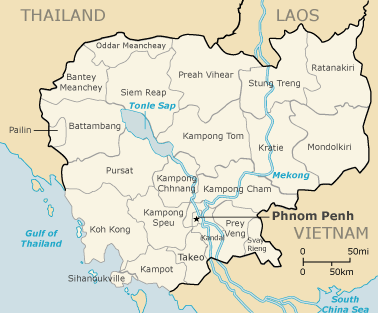 map courtesy – http://davidangkorguide.blogspot.com/2010_08_01_archive.html
map courtesy – http://davidangkorguide.blogspot.com/2010_08_01_archive.html
b. This map shows the Khmer temples in Thailand and Laos.
The north-east of Thailand has many Hindu Temples dedicated to Lord Shiva like Prasat Muang Tam, Prasat Phimai, Prasat Sikhoraphum and Prasat Phanom Rung.
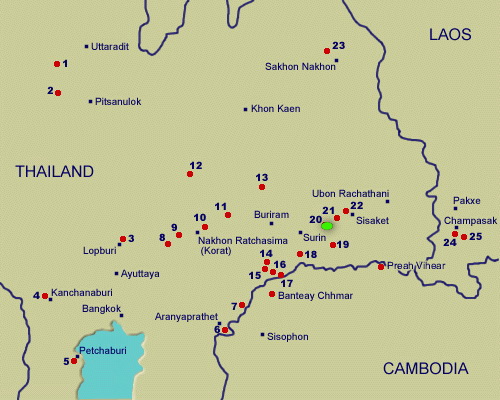 map courtesy – http://www.devata.org/two-khmer-devata-goddesses-in-sikhoraphum-thailand/#.VNj0LCyInrE
map courtesy – http://www.devata.org/two-khmer-devata-goddesses-in-sikhoraphum-thailand/#.VNj0LCyInrE
The temples identified from the map, namely –
11- Prasat Phimai
14 – Prasat Phanom Rung
21- Prasat Kamphaeng Yai
23 – Prasat Narai Yeang Weang
host the sculptures of Karaikkal Ammai with Dancing Shiva. We shall see the pictures in later posts.
As mentioned before, the Comparison or the Relationship of Khmer Temples currently existing in modern day Cambodia and Thailand shown above through the map, is to specify the common thread ‘Shiva’, especially ‘Dancing Shiva’ and the presence of ‘Karaikkal Ammai’.
According to available historical sources, these temples were built by Khmer rulers with basically similar temple architectural styles and even today extensively preserve iconographic structures related to our current topic of interest – ADALVALLAN-KARAIKKAL AMMAI (dancing shiva-karaikkal ammai).
Ammai has been an intertwined matter of importance when it came to sculpting a panel of Adalvallan/Dancing Shiva or Nataraja. This is indeed a very vital proof of the connection of the Tamil Kingdoms with the Khmer Empire.
The earliest sculpture of Karaikkal Ammai in Cambodia seems to be in Banteay Srei, which is a 10th century ACE temple. Just because the Cholas were ruling Tamilagam at that point of time, and the most popular of the sculptures of Ammai belong to the Chola Temples, can this be called a Chola-Khmer Connection? Certainly yes, yet cannot be concluded without adequate historical research.
We also need to see the earliest of Ammai Sculptures in Tamilnadu. Even before her sculptures were created, she was a great influence on other Nayanmar Saints and commoners alike before the Cholas came to power.
Her hymns in praise of Lord Shiva, helped the Tamil Society connect with their Lord in the language they understood rather than in a language that was made to believe that the Lord understood.
It should be noted that there are epigraphical evidences on Thevaram hymns (sung by 63 nayanmars) being recited in temples during Pallava King Nandivarman III in mid 9th century ACE. Therefore, before the Kings could bring her in stone and bronze in their temples, her Tamil hymns had entered the souls of the Tamil people and were sung in many Shiva Temples.
Karaikkal Ammai who was born in the Pallava Terrain in Tamilnadu, glorified by other Nayanmars during the rule of Pallavas and her hymns recited in many Shiva Temples during the Pallava reign, gently glides into Chola Terrain, where she is immortalised in the most extra-ordinarily built temples like Thanjavur Periya Kovil and Gangai Konda Cholapuram.
But before Thanjavur and Gangai Konda Cholapuram temples, Ammai has been sculpted in a few other temples in the Tamil Country. While we see her gentle glide from one Empire to the other in Tamilnadu, her transit eastward towards Cambodia and Thailand is certainly a ‘Need To Know and Explore’ Travel Package.
But we need to further look into previous centuries too, as the connection could not have started abruptly from 10th century…
Coming back to Battambang province of Cambodia –
Vat Ek Phnom
This is a 11th century temple built during the reign of King Suriyavarman I (1002-1050). It is located on a foot hill and presently only ruins of an ancient hindu temple can be found. There is a Buddhist Temple in front of the ruins.
When we went in December 2014, we couldn’t find Karaikkal Ammai in any of the lintels in the temple. Could the lintel with ammai be damaged due to natural or man-made ruins or kept in the lot of piles of broken lintels and stones in and around the temple, or luckily kept or taken to any other museum… only further searches and researches would tell. But no known description could be seen.
Vat Baset
Vat Baset has been written about in the last post (karaikkal-ammaiyar-revered-mother-of-karaikkal/).
A gentle reminder on the lintel of Ammai found in Vat Baset –
ammai
Battambang Provincial Museum
Two pediments in truly ruined form were found in Battambang Provincial Museum which seem to look like Ammai. I leave it to future researchers to arrive at a conclusion aided by further scientific investigations.
adalvallan/dancing shiva
and to his left someone can be seen in squatted position –
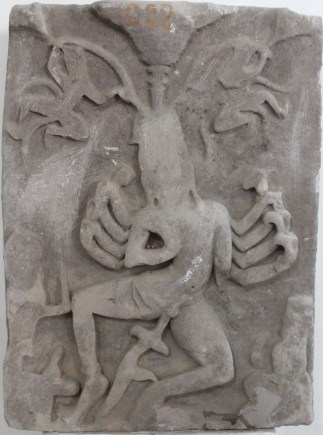 and thin structured Ammai to his right?
and thin structured Ammai to his right?
 At the entrance of the museum, is placed a lintel with Dancing Shiva with a string instrument in his hand and accompanied by two women by his sides. One is his consort ‘Devi’ as the Museum booklet mentions and the other is Karaikkal Ammaiyar. This lintel is a clean/clear one.
At the entrance of the museum, is placed a lintel with Dancing Shiva with a string instrument in his hand and accompanied by two women by his sides. One is his consort ‘Devi’ as the Museum booklet mentions and the other is Karaikkal Ammaiyar. This lintel is a clean/clear one.
 a closer view – ammai to his left
a closer view – ammai to his left
The Museum’s Booklet says –
Devi, one of Shiva’s consorts, sits on a lotus near his right foot. Her outstretched arm reaches toward Shiva’s leg. An emaciated Karaikkalammaiyar with pendulous breasts sits on another lotus flower at Shiva’s left foot.
It also mentions –
In Khmer Iconography, an emaciated Karaikkalammaiyar is often seen crouched at the feet of dancing Shiva, marking the rhythm of his dance with a pair of cymbals.
Here, the sculpture mentioned as Devi seems to be playing the ‘Muzhavu’ an ancient percussion instrument of the Tamils. This looks like ‘oru mugha muzhavu’ or a single drum instrument that can be seen in banteay srei sculpture too – dancing shiva with ammai on one side and a person with a single drum on the other.
oru mugha muzhavu to the left of dancing shiva
closer view
 This is again a separate topic of research whether the sculpture of Vat Baset at Battambang Museum also plays the ‘oru mugha muzhavu’ – the percussion instrument.
This is again a separate topic of research whether the sculpture of Vat Baset at Battambang Museum also plays the ‘oru mugha muzhavu’ – the percussion instrument.
Four of the six temples of Karaikkal Ammaiyar in Cambodia (banteay srei, vat ek, vat baset, preah vihear, phnom chissor and angkor wat) mentioned by Peter J. J. de Bruijn, four were built by Suriyavarman I, during the first half of 11th Century ACE. Suryavarman I built Vat Ek, Vat Baset and Phnom Chissor. In Preah Vihear temple, the construction of which started in early 9th century ACE – preserved and redeveloped by various rulers until 12th Century ACE, most of the surviving lintels are by Suryavarman I and later was restored by Suryavarman II.
The Monumental Preah Vihear Temple – which the Khmer prefer to call the Khmer Sancturary than a Hindu Monument is located in the Preah Vihear Province of Cambodia. We shall see Karaikkal Ammai with Dancing Shiva in Preah Vihear in the upcoming post.

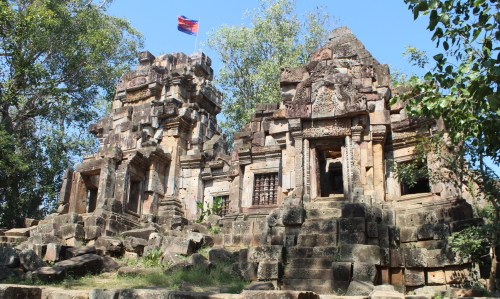




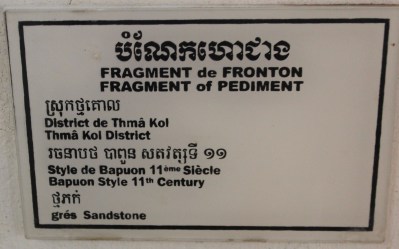
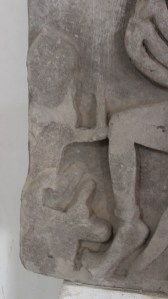

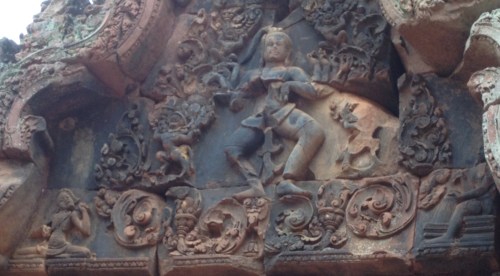
Well written. Kudos to your efforts for connecting the dots in the history of tamils’ influence over SEA (South East Asia).
LikeLike
thankyou so much. This is truly encouraging.
LikeLike
This is truly fascinating. I am interested in narratives associated with Karaikal ammai, this gives me a fresh perspective.
LikeLike
Temples of south east Asia have so much to showcase, in terms of their Tamil Connection. Thanks for the appreciation.
LikeLike
are the image here are copyrighted????????
LikeLike
Thanks for asking. You can use the images. But, please give credits to the website wherever you’d use them. If using in web, give link of my blog/website, and if using otherwise mention ‘www.glorioustamils.com’.
LikeLike
thanks a lot i will mention your website.
LikeLike